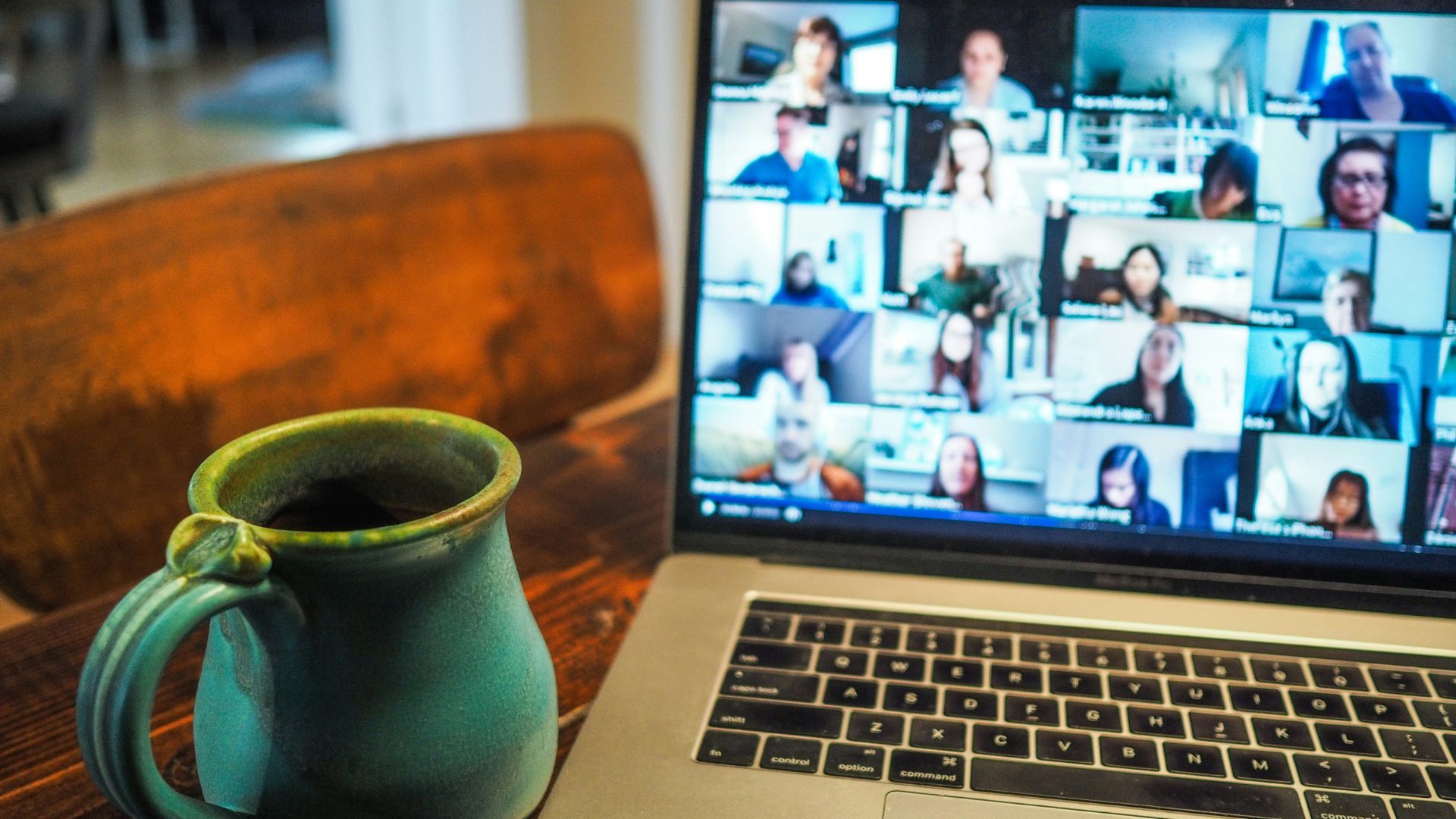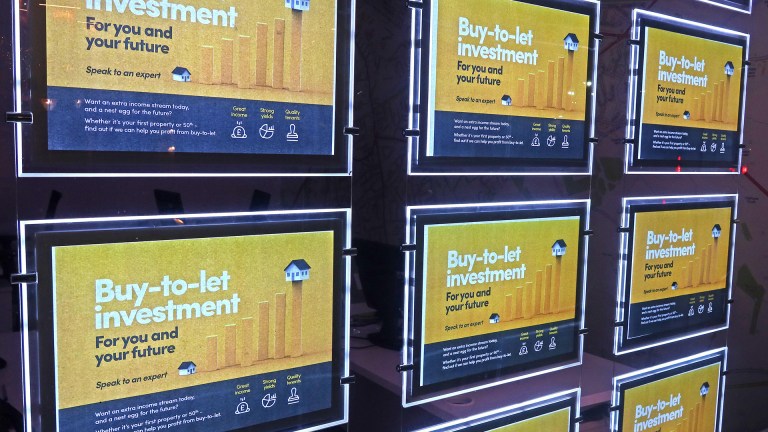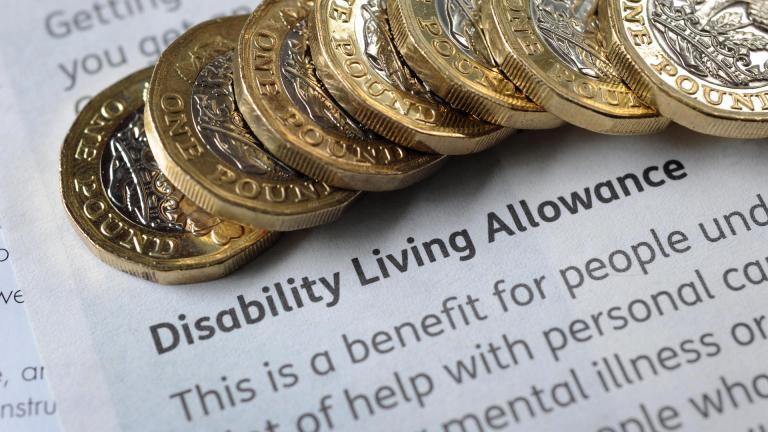“I work three days a week at home, and two in the office,” Sara adds. “I did five in person before Covid but that’s hard to imagine now.”
Chloe – an actuarial assistant at a nearby table – gamely indulges the intrusion. She’s just finished an all-staff meeting on Microsoft Teams, at which “maybe 80%” of people were tuning in remotely.
“You can see because they’re all sat in their rooms or have the blurred backgrounds,” she says. “Or in cafes, like me. It’s annoying if they don’t mute and then you can hear music and stuff.”
Zoom gripes and flat whites: it’s a snapshot of white-collar working Britain. Up and down the country, millions of us spend our days hunched over kitchen tables, parked up in ‘co-working-friendly’ cafes, and even – if Daily Mail broadsides against flexible working are to be believed – suntanning poolside.
“It’s certainly a notable consequence of the pandemic,” says Richard Saundry, a principal research fellow at the University of Westminster. “It’s reshaped how many of us work, and on a more fundamental level, how many people think about work.”
When Boris Johnson declared lockdown, offices across the country shut their doors. Of course, millions of Brits – health workers, logistics operatives, retail staff, police and firefighters, to name a few – did not get to WFH.
Advertising helps fund Big Issue’s mission to end poverty
But Britain has a lot of desk jockeys. Within a month of lockdown, 43.1% of the population were working from home.
It “felt completely sudden,” says Graham Symons, director at Greenwich Business School’s Centre for Research in Employment and Work. But in reality, “Covid pushed at an open door.”
“Ideas of homeworking have been around for around 40 years – back in the day, it was called tele-working. There were dial up modems, it was cumbersome and expensive, but the idea of it was there,” he told Big Issue.
“I mean, they were saying in the 80s that, ‘Oh, by the year 2000, the actual physical workplace will be a thing of the past. We’ll all be working at home.’ Of course, it didn’t come to pass. But these ideas were around and these experiments were happening.
“By [2019] the technology had advanced to enable it – broadband, for example. Everything was pretty much in place – but Covid triggered a huge cultural shift.”
Rebecca Florisson, a principal analyst at the Work Foundation at Lancaster University, agrees with this latter point.
Advertising helps fund Big Issue’s mission to end poverty
“It wouldn’t have happened without the pandemic – certainly not so quickly,” she says. In 2021, the Work Foundation surveyed businesses on their flexible work policy; some 70% had no provision in place pre-pandemic.
Unlike many Covid legacies (where has the face mask gone?), It’s stuck. Occupancy rates in offices are roughly half what they were before the pandemic struck, for example, depriving already-ailing high street businesses of the office lunch break footfall.
But retail implications aside, the data overall suggests that WFH is good for workers.
If you’ve ever spent rush hour on a crammed train, this probably won’t surprise you.
According to an International Workplace Group (IWG) survey conducted last year, three-quarters of those who work flexibly feel less burnout than compared to when they spend the whole week in the office. Nearly nine-in-ten (86%) had improved their work-life balance.
It’s a somewhat complicated picture; Gallup’s State of the Global Workplace report found that 25% of fully remote employees experience daily loneliness, compared to 16% of fully onsite employees.
Advertising helps fund Big Issue’s mission to end poverty
But overall, Florisson says, employees tend to like WFH. And it means employees with disabilities or caring responsibilities no longer find themselves automatically locked out of certain jobs: “It’s been particularly beneficial for women, who still shoulder the bulk of caring responsibilities. Being able to work flexibly allows you to do things like pick up a sick child or even do the school run.”
“And on the other hand, it gives men – who may be less present at home, but want to be more present – [the opportunity] to take up more of a role at home.”
So far, so good. But like any big social shift, WFH is not without its detractors. Last year, several big companies – including Amazon, Boots and JP Morgan – asked staff to return to the office full-time. Elon Musk told Tesla staff unwilling to work in-person that they could “pretend to work elsewhere”.
The evidence is mixed when it comes to WFH’s impact on productivity. One Stanford University study associated fully remote work with a 10% drop in productivity (hybrid working “appears to have no impact”). But a Future Forum study of more than 10,000 workers yielded a more positive finding: workers with full schedule flexibility report 29% higher productivity and 53% greater ability to focus than workers with no flexibility.
For detractors of WFH, the kind of results offered by the latter study don’t really matter. “For the likes of Elon Musk,” Symon explains, “this is not really about data.”
“His kind of opposition to WFH is not necessarily based on a business case, nor on a rational economic argument. It’s a particular view about what is ‘proper work’ – and this assumption that if workers aren’t being watched, they won’t be working.”
Advertising helps fund Big Issue’s mission to end poverty
The previous Tory government adopted this line, as has the right-wing press. In 2022, Jacob Rees-Mogg famously left “sorry you were out when I visited” notes on the desks of civil servants. More recently, The Daily Mail called Labour’s plans to enshrine flexible working rights in law a “WFH charter for idlers” while The Times asked whether it was “shirking from home”.
“How frequently do you think people who work from home take advantage of the situation to do less work or work less hard?”
This question, posed by YouGov pollsters to 5,700 adults late last year, reveals the extent to which opinions on WFH map onto political affiliation.
Some 62% of Reform voters and 63% of Tories answered ‘frequently or very frequently”. Just 48% of Labour voters and 39% of Lib Dems agreed.
“The politicisation… reflects a certain view on what work is,” says Saundry. “It’s rooted in a distrust of workers, a distrust of employees. The idea that if you aren’t putting your staff under surveillance, they’ll be trying to pull one on their boss.”
The evidence doesn’t bear this out, he adds. “All the evidence really suggests the opposite is the case – WFH does not mean workers become lazy or workshy”.
Advertising helps fund Big Issue’s mission to end poverty
What is clear is that most workers bitterly oppose return-to-office mandates. Staff at the Office for National Statistics and the Land Registry, among others, have voted to strike to preserve their right to work remotely. The Chartered Institute of Personnel and Development has found that about four million people have changed careers because of a lack of flexibility at work.
“[If organisations force people to return to the office], there’s a risk of alienating talent,” says Symon. “People will just go and work somewhere else.”
It is this, ultimately, that means work-from-home is here to stay. Not for everyone – the ONS last year found that workers with degree-level education are 10 times more likely to have a hybrid working arrangement than those with no qualifications. But five years on from the dawn of the Zoom call, and the world of work may have changed forever – at least for the desk jockeys amongst us.
Do you have a story to tell or opinions to share about this? Get in touch and tell us more. Big Issue exists to give homeless and marginalised people the opportunity to earn an income. To support our work buy a copy of the magazine or get the app from the App Store or Google Play.










